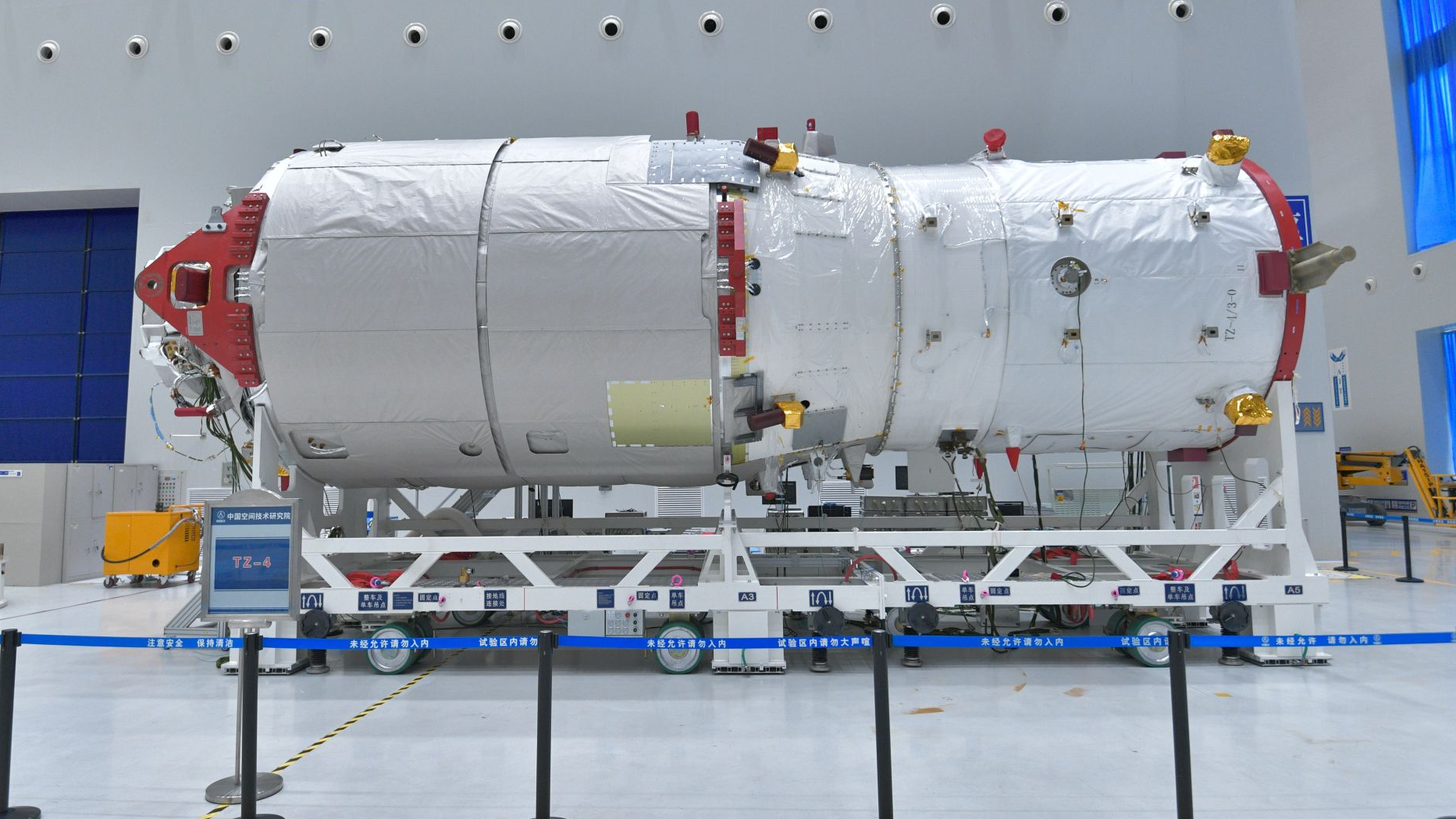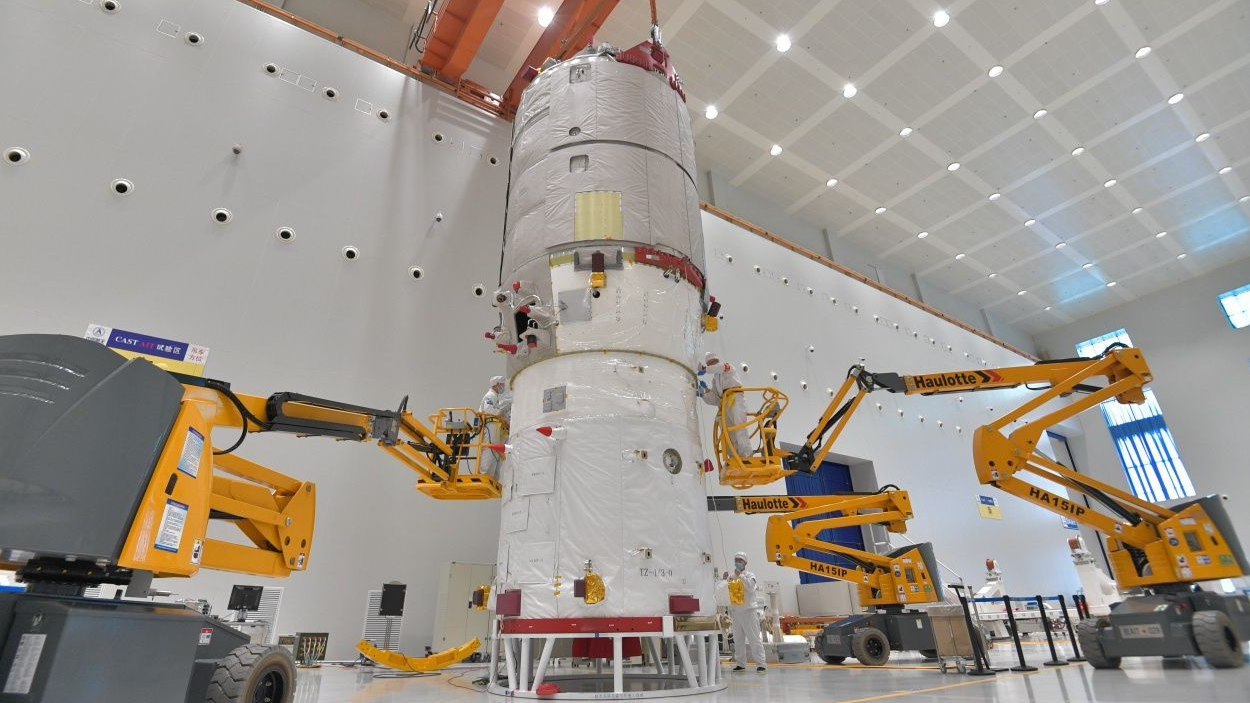
Tianzhou-4 cargo spacecraft with grey insulation on the left and white insulation on the right. /China Media Group
Tianzhou-4 cargo spacecraft with grey insulation on the left and white insulation on the right. /China Media Group
Editor's note: CGTN's China Space Station series provides a collection of in-depth stories and analysis about technologies used in China's first permanent space station, the crown jewel of the nation's space endeavors.
China Space Station has to endure the direct sunlight in the space due to the absence of the protection of the atmosphere when it's cruising 400 kilometers afar from Earth, lifting the requirement for cutting-edge heat distribution technologies.
The surface of the space station can be facing heat rays up to 150 degree Celsius when facing the sun. In the meantime, the temperature on the back side drops to minus 100 degree Celsius. A thermal control system is indispensable to maintain a comfortable environment inside of the cabin.
The thermal control system is designed to keep all components within acceptable temperature ranges for operation and crucial for taikonauts to live in. Unlike previous short-term manned missions, the space station is needed for a long term use – a higher and more strict standard for temperature control.
The research team made an array of technology breakthroughs to create a well-functioned "air condition" for the space station.
The fluid circuit is the key part of the space thermal control system as it cocooned the key modules including the core module and the lab module. By balancing the heat distribution, the system helps to cool down the overheated part and warm up the places that are too cold to function. With the certain liquid circulating through the tubes, the fluid circuits bring the extra heat generated by the gears and taikonauts to other equipment or components.
The Wentian lab module, which is equipped with a considerable number of experiment payloads as it is by far the largest and heaviest part of the space station, special care is required.
The research team has developed three sets of cooling systems to collect and radiate the heat generated by various equipment to the outer space. The systems can radiate up to thousands kilowatts of heat, making sure the delicate equipment are working properly inside the lab.

Tianzhou-4 cargo spacecraft in preparation. /China Media Group
Tianzhou-4 cargo spacecraft in preparation. /China Media Group
Besides the thermal control system, there are also passive thermal control designs which do not involve powered equipment. Such methods has the merits such as low cost, small volume, light weight and low risk.
The thermal coatings is one of the approaches. Shenzhou spacecraft series has started using a layer of silver-color thermal coating on its spacecraft since Shenzhou-12. The coating material can absorb less sunlight and reduce the heat. It also helps prevent the heat from dissipating inside the cabin to the outside.
The spacecraft is also covered by another kind of passive thermal control design – the multilayer insulation.
China Space Station adopts various insulation for different spacecraft. The spacecraft Tianzhou-4 uses multi-layer insulation composed of layers of high-reflectivity film and polyester mesh, which can prevent heat loss.
Its cargo cabin is covered by grey insulation which absorb a relatively much more sunlight for a higher temperature for human activities, while its propulsion section, mostly equipment inside, is covered by white insulation to reflect sun's heat to keep a cooler temperature.
Read More:
Homegrown solar array powers nation's space ambition

